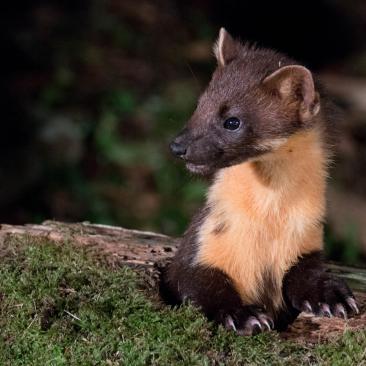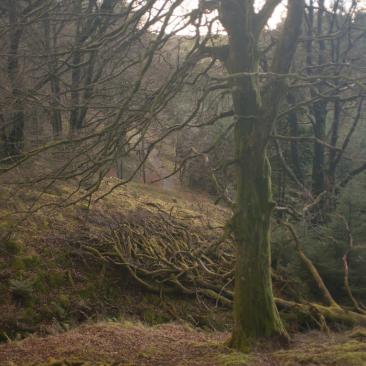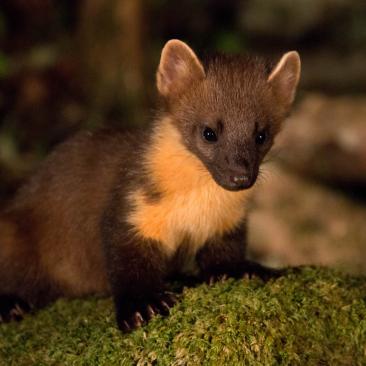The pine marten, Martes martes, is a cat-sized, mainly nocturnal member of the mustelid family that is native to Britain and Ireland. Pine martens are agile climbers and spend most of their time in wooded areas. They prefer structurally diverse woodland habitat, be it deciduous or coniferous, with a well-developed ground and shrub layer and some old trees.
Recent research has shown that pine martens will predate grey squirrels when they are present. In parts of Ireland, where martens are spreading, there has been a decline in grey squirrels and the native red squirrel has begun to recover. There have also been reports of a similar effect observed in Scotland.

Thirty years of research and surveys by The Vincent Wildlife Trust (VWT) led to the conclusion that action was urgently needed to prevent complete extinction of the pine marten and restore viable populations to their historical range in England and Wales. So, in autumn 2015, after two years of work to pave the way, twenty pine martens were translocated from thriving populations in Scotland, to a large expanse of woodland in central Wales. A further nineteen were released into the same area the following year. All of the animals have been radio tracked and monitored for a long period after release.

Martens are slow breeders: they do not usually mate until their second or third year and then only have one litter per year of two to three kits. In spring, following the first translocations, at least half of the radio tracked females in Wales had kits.
This shows that they have found enough resources to support them in their newly established territories. Naturally structured and biodiverse woodland, with retained deadwood, old trees, and ground flora, support small mammals, birds, invertebrates, fruit growth and a range of other food sources. Suitable den sites are vital for rearing kits, whereby a range of woodland structures are utilised, including squirrel dreys, windthrow (broken or up uprooted trees), rock faces and old buildings. Above-ground tree cavities are especially effective at keeping kits safe from predators such as foxes.

Pine martens are a native component of our woodland ecosystems and can be considered a flagship woodland species. Extensive and diverse woodland that is suitable for pine martens, is likely to benefit a wide range of other species and be more resilient to changing environmental conditions. Fortunately many forest management plans, including those that meet the requirements of FSC, now aim to increase structural and species diversity to promote the sustainability of forest ecosystems. Developments in forestry (including more use of native broadleaved species and lower impact silvicultural systems such as continuous cover forest management) should be beneficial for pine martens in terms of habitat, increased food availability and breeding locations.

Dr Jenny MacPherson, Pine Marten Project Manager at Vincent Wildlife Trust
Jenny manages The Vincent Wildlife Trust’s Pine Marten Recovery Project for England and Wales. She has worked on a number of mammal reintroduction projects in the UK and Africa over the past twenty years, and carried out research on the ecology and behaviour of a range of species including pine marten, dormouse, red squirrel, water vole and mink.
For more information on forest management and pine martens visit the Vincent Wildlife Trust website www.vwt.org.uk.

